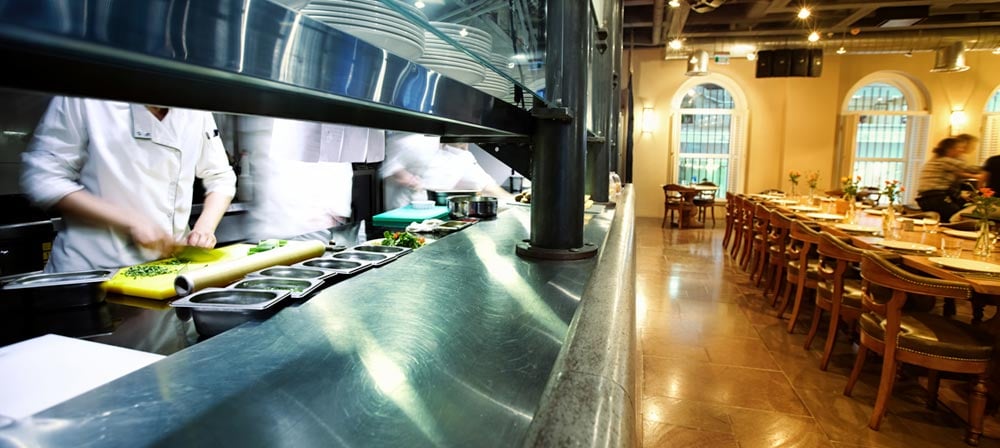It's been almost 30 years since UL 300 redefined the rules for commercial kitchens to account for modern cooking techniques. But despite the advancements in fire protection technology required by the UL 300 standards, many restaurants have yet to fully protect their business by upgrading to a modern kitchen fire suppression system.
Here's what you need to know about UL 300 and why it matters more than ever for protecting your restaurant.
What is UL 300?
In 1994, Underwriters Laboratories released "Fire Testing of Fire Extinguishing Systems for Protection of Restaurant Cooking Areas," also known as UL 300. The standard outlines specific guidelines that fire protection equipment manufacturers must meet for systems to receive a UL 300 label.
Each manufacturer must submit their system to Underwriters Laboratories for testing, which includes real-world fire testing on commercial cooking equipment used in today’s restaurants. Fire suppression systems that meet the UL 300 standard are significantly more effective at controlling kitchen fires than systems designed to meet previous standards.
Most states have adopted NFPA 17A and NFPA 96 as a part of their fire code, requiring all commercial kitchen fire suppression systems to be UL 300 compliant. Additionally, most insurance companies require compliance with this standard as a prerequisite to coverage.
Related Resource
THE RESTAURANT OWNER’S COMPLETE FIRE PROTECTION GUIDE
Learn how to counter the evolving fire risks in your restaurant. Learn More →
Why Does UL 300 Matter for Your Restaurant?
Theoretically, your commercial kitchen would not already have a UL 300-compliant fire suppression system if you haven’t upgraded your cooking equipment since the standard was created in the early 90s.
Unfortunately, the adoption of these standards has been inconsistent, and many restaurants still haven't taken steps toward code compliance. Here’s why it's imperative that you make sure your commercial kitchen suppression system meets these standards.
The fire hazards in your kitchen today are different than they were twenty years ago. Before UL 300, most commercial cooking involved animal fat. Deep fryers were poorly insulated, which made cooking temperatures inconsistent. The extinguishing systems which protected those kitchens used a dry chemical that provided little or no cooling.
Today, deep fryers have excellent heat retention and are well insulated. Modern restaurants typically use vegetable oils for cooking, not animal fats. But that means that dry chemical and older wet chemical systems are no longer capable of extinguishing and/or sustaining that extinguishment. The lack of cooling associated with dry chemical and the lesser amounts of wet chemical use in non-UL 300 systems led to a high occurrence of extinguishment failure or re-ignition, sometimes resulting in catastrophic losses.
So, unless you have a UL 300-compliant suppression system, the chances are that your restaurant is not as protected as you may think it is. The cooking equipment and methods we use today make non-UL 300 suppression systems obsolete.
What are the Requirements for a UL 300 System?
Fire suppression systems that are UL 300-compliant must use a wet chemical agent. Wet chemicals suppress flammable vapors but also cool the source so it can’t reignite. Remember that although a system may be labeled as a “wet chemical,” that doesn’t necessarily mean it is UL 300-compliant.
In addition to using a wet chemical agent, UL 300 systems must also include:
- A manual pull station
- An automatic fire detection system
- Automatic fuel shut-offs for gas and electric
- Nozzles located in the hood and duct
- Nozzles located over each grease-generating cooking appliance
- Wet chemical system serviced semi-annually by an authorized licensed service company
- Hood and duct maintenance and cleaning semi-annually by an authorized licensed service company
Dig Deeper
Learn everything you need to know about kitchen fire suppression system inspections. Learn More →
Installing a UL 300-Compliant Fire Suppression System for Your Restaurant
Installing a UL 300-compliant fire suppression system is more than a requirement for your restaurant. It’s a critical step in protecting your employees, customers, and livelihood. Restaurant owners should partner with a qualified fire and security company to design and install a reliable and code-compliant fire suppression system that best meets their needs. For any code compliance questions, our fire and life safety specialists are available 24/7/365.
Editor's Note: This post was originally published on January 18, 2017, and has been updated for accuracy and current best practices.








